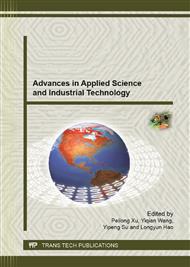p.3
p.8
p.12
p.17
p.25
p.30
p.35
p.39
Curing Kinetics of Anisotropic Conductive Adhesive in the Manufacturing Process of RFID Tags
Abstract:
The study of the epoxy-based anisotropic conductive adhesive in electronic packaging interconnects applications (chip-on-glass, chip-on-flex, etc. especially in RFID applications) has received particular attention. This is due to its potential advantages of finer pitch printing, reducing environmental contamination. The thermal curing process is critical to develop the ultimate electrical and mechanical properties of the ACA devices. In this article, the curing kinetics of ACA was studied with a differential scanning calorimeter (DSC) under constant heating rates conditions in the range of 520 °C/min. The model free method was used to describe the curing reaction. The degree-of-cure and the activation energy through the whole conversion range were mathematically determined and used to predict the progress of the curing process. Experimental results show that the activation energy of the ACA varies significantly with degree-of-cure during the curing process. The peculiar phenomenon indicates that the ACA underwent a complex series of reactions. The kinetics of curing reaction changes when large conversion values are reached at low heating rates. The change in the reaction kinetics is due to vitrification of the ACA during heating. In addition, the degree-of-cure of the ACA as a function of bonding times during isothermal ACA bonding process was theoretically predicted.
Info:
Periodical:
Pages:
17-24
Citation:
Online since:
September 2013
Authors:
Price:
Сopyright:
© 2013 Trans Tech Publications Ltd. All Rights Reserved
Share:
Citation:


